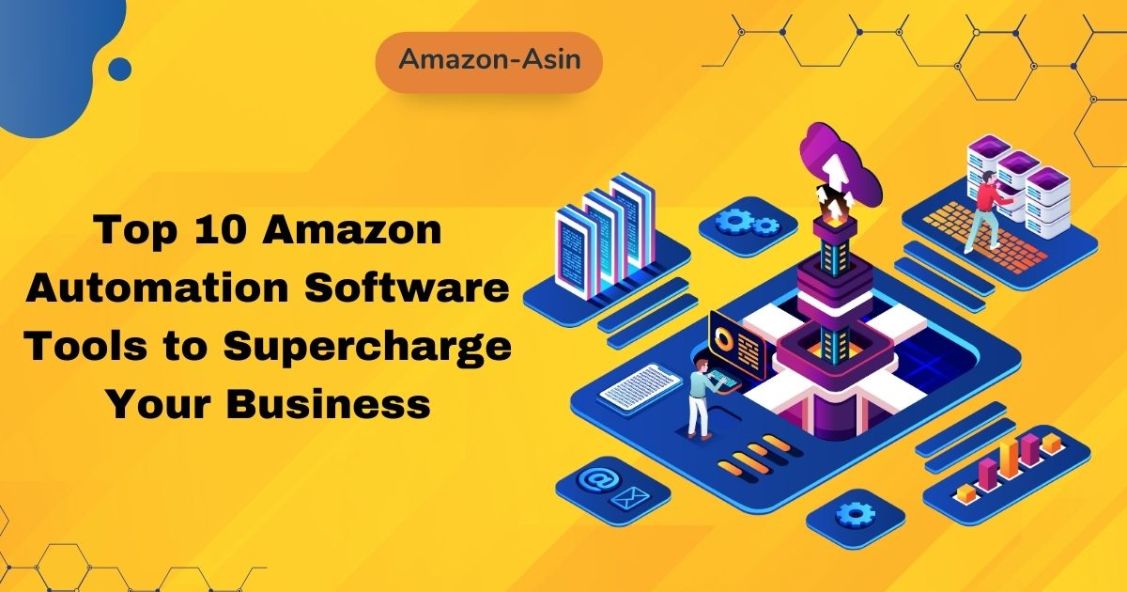Amazon black hat tactic or practice is any kind of action that goes against Amazon Seller’s terms and conditions. We want to be clear that we do not support, use, or affiliate with any of these tactics. In fact, quite the contrary. We frown upon sellers who use these tactics to try and artificially increase their page rank.
Amazon has made it very clear that sellers who use these tactics will not benefit from them as they have complex methods of tracking these artificial rank boosters.
Amazon A9 Algorithm
A9 is how Amazon refers to its search engine algorithm, or its proprietary system that ranks products in a specific order when a consumer enters a word or phrase into the search bar. Did you know that 63% of consumers start their online searches on Amazon?
With that it mind, it is imperative that an A9- specific SEO strategy is developed with a solid understanding of how Amazon’s proprietary search engine works. Unlike Google SEO, A9 is a closely-guarded secret that very few have insider knowledge about.
Due to the limited details shared about A9, it’s difficult to identify what we will call “influential factors”—things similar to what we mentioned above with Google such as keywords and backlinks. This is what makes Amazon SEO challenging.
Unlike Google SEO, A9 doesn’t make their optimization algorithm public, so SEO usually comes down to guesswork. However, based on our tests and knowledge of the Amazon Flywheel, we think we have it figured out. A9 may be difficult to master, but it’s not impossible. Let’s first discuss how Amazon ranks differently than Google.
Amazon’s ranking system doesn’t follow the same rules as most other search engine platforms because it is trying to accomplish a different goal. The best way to understand this is to focus on the conversion funnel, or the path that a consumer takes when making a purchase.
When a consumer goes to Google and searches for something, they are typically at the top of the conversion funnel, “awareness” or “interest.” They are searching for more information about a topic or product. When a consumer searches for something on Amazon, they are specifically searching for products that meet a need. This places users of Amazon lower in the funnel at “desire” or “action.”
Amazon has to account for their user’s unique needs. A9 enables Amazon to realize their user’s full shopping potential during this “desire” and “action” phase of the conversion funnel. To boil this down for simplicity; Google is primarily focused on information while Amazon is focused on conversion.
Amazon Vs Google
Hopefully it is now clear what makes Google and Amazon different and why they both demand a unique SEO strategy. As a quick recap, Google is most widely used for gathering product and brand information, whereas Amazon is where the consumer actually makes a purchase.
Although Google and Amazon share some ranking similarities, their different goals should lead you to develop unique SEO strategies. In order to create a successful Amazon SEO strategy, you must understand Amazon’s fundamental goal, “to be earth’s most customer-centric company; to build a place where people can come to find and discover anything they might want to buy online.”
Amazon’s Fundamental Goal
To be earth’s most customer-centric company; to build a place where people can come to find and discover anything they might want to buy online
Amazon Black Hat SEO Practices Every Amazon Seller Should Avoid
Below are a few of the most common Amazon Black Hat Techniques:
1. Keyword Stuffing
As previously mentioned, there was a time when you could positively influence your page rank by increasing the saturation of keywords in your content. This is no longer the case. Amazon advises sellers to avoid entering redundant information in the keywords fields, suggesting this won’t impact your placement in search results.
You can, however, include words in your product description that are included the product title, as this can still benefit customers when making a purchase decision.Putting Amazon’s style guidelines aside, let’s think about the consumer experience when a product detail page is stuffed with keywords.
Looking at an example of a generic phone charger (above). Would you purchase this product? While it may improve the relationship strength for a variety of search terms in the eyes of A9, the title looks messy and is very difficult for consumers to read. Content that is difficult for consumers to read will negatively impact your listing’s performance. In fact, 98 percent of shoppers are dissuaded from completing a purchase because of incomplete or incorrect content.
This proves how important it is to consider the consumer experience when optimizing your product detail pages. As such, we highly recommend the human-appeal of your listings be carefully considered.
2. Click Farms
You’ve probably heard of click farms. If so, you’re not the only one. Major websites are also aware of their existence and work diligently to reduce their influence. If you’re unfamiliar with the term, click farming is the practice of artificially inflating the number of clicks a link receives.
On Amazon, this can be applied in a few different scenarios such as wasting competitor’s advertising spend or driving artificial traffic to a listing. When artificial traffic is associated with a specific keyword or search term using a Super URL, it can drastically improve the listing’s click-through rate. Why does this work? As previously mentioned, the click-through rate is likely a factor that Amazon analyzes when determining how related each product is to the user’s search term.
By artificially increasing the number of clicks your product receives, you can potentially trick A9 into thinking your product is more related to the specified keyword or search term than it actually is. Here’s where it gets interesting. When this practice was first exposed by David Gaughran, it received a lot of attention. As such, Amazon developed systems for evaluating the quality of traffic to each listing, the conversion rate being one of the more profound.
This is why click farms simply aren’t worth the risk. While they may artificially improve your listing’s page rank in the short-term, the increased traffic without corresponding purchases will ultimately damage your listing’s conversion rate. The net result is simply not worth the risk of falling into the crosshairs of Amazon’s Seller Performance Team.
3. Super URLS
Super URLs are generated links that can be used on external websites to drive traffic to a specific Amazon product based on a keyword. Sounds like a pretty good gig, doesn’t it? Not exactly. Amazon has complex systems that allow them to track how and where individuals (or bots) arrive on their website. Looking at this URL for the Coleman Sundome 4-Person Tent that we found by typing in “tent,” you will notice two very unique identifiers, an “sr” code and “qid” number as shown above.
These two unique identifiers within the URL allow Amazon to track external traffic arriving at any given listing. The “qid” represents the number of seconds since January 1, 1970 and the “sr=” shows the page number and page position number at the time of the search.
This means that Amazon is tracking page position and time for every super URL created and it is rumored that product purchases and reviews left from consumers using these Super URLs are being removed as legitimate conversions in Amazon’s conversion statistics. Gaming the system by driving unnatural traffic to a product detail page through these Super URLs will likely not help your product or page rank, not to mention that you could get on Amazon’s radar. As such, we don’t recommend using Super URLs as a part of your SEO strategy.
4. Fake Reviews
Customers rely heavily on product reviews when they make online purchases. In fact, roughly 84 percent of people trust reviews like they trust their friends’ opinions. That being said, manipulating reviews can be very misleading for customers during the purchasing process.
Amazon is aware of this issue and has been the target of intense criticism for the validity of reviews on its website. Prior to all the publicity around review authenticity, sellers could easily inflate their product reviews by providing product for free, or at a steep discount, in exchange for a review. Amazon is now aggressively cracking down on sellers who attempt to manipulate product reviews in any way.
Recently, there have been reports of hundreds of thousands of product reviews being removed from Amazon after being identified as inauthentic or influenced. You will also notice a “Verified Purchase” tag on most reviews. This is another form of letting customers know the review is authentic.
There are also a host of websites that can be used to detect fake reviews—our personal favorites are fakespot.com/ and reviewmeta.com/.
These sites provide users with an estimate of how authentic a product’s reviews are. While they are only estimates based on data that’s publicly available, they provide a great reference for sellers and consumers alike.
Watch this video to learn about the importance of verified reviews, and how verified reviews help the seller to grow their business on Amazon.




